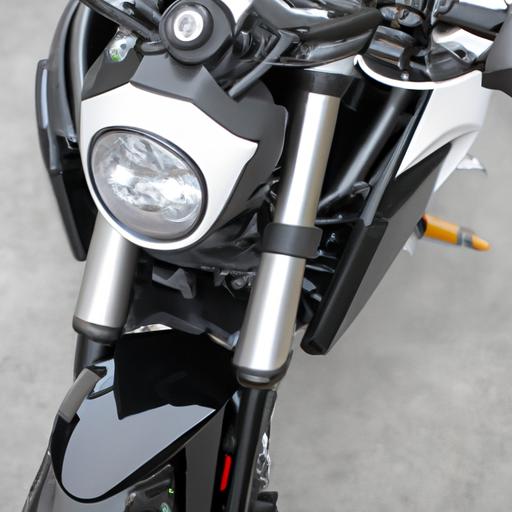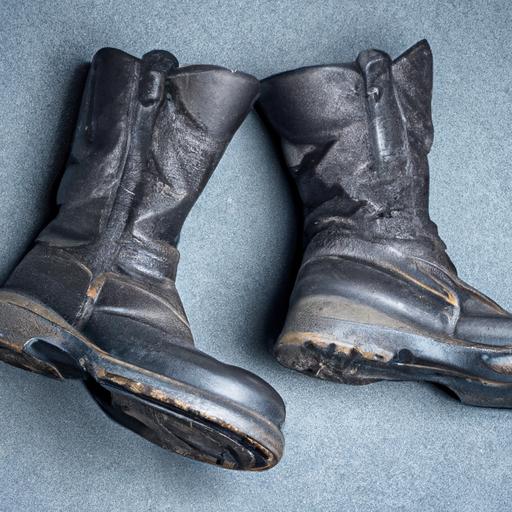Is a MIPS Helmet Worth It? Exploring the Importance of Helmet Safety and the Innovative MIPS Technology
Sports and outdoor activities undoubtedly bring joy, excitement, and a sense of adventure into our lives. However, it is crucial to prioritize safety while engaging in these activities, especially when it comes to protecting our heads. This is where helmets play a pivotal role in safeguarding us from potentially life-altering head injuries. But with the advancement of technology, there’s a new player in town – MIPS helmets. You might be wondering, “What exactly is MIPS technology, and is it worth the investment?” Well, let’s dive in and explore the world of MIPS helmets together.
A. Importance of Helmet Safety in Sports
When we engage in activities like cycling, skiing, or skateboarding, our heads become susceptible to impacts and rotational forces that can result in severe brain injuries. Helmets act as our first line of defense, absorbing the impact and minimizing the risks. However, not all helmets are created equal. Traditional helmets primarily focus on linear impacts, while MIPS helmets take safety to the next level by addressing rotational forces as well.
B. Overview of MIPS Technology
MIPS stands for Multi-directional Impact Protection System. It is a revolutionary technology designed to reduce the rotational forces experienced during an oblique impact. The MIPS system consists of a low-friction layer between the helmet’s outer shell and the inner padding. This layer allows the helmet to slide slightly, redirecting and absorbing rotational forces, thus reducing the potential for brain injuries.
C. Purpose of the Article
In this article, we aim to examine the effectiveness and worthiness of MIPS helmets. We will explore the science behind MIPS technology, compare it with traditional helmets, evaluate its real-world impact through research studies and data, and provide insights to help you make an informed decision about investing in a MIPS helmet. So, let’s unravel the mysteries surrounding MIPS helmets and discover whether they truly live up to the hype.
Stay tuned as we delve deeper into the world of MIPS helmets, understanding their inner workings and evaluating their effectiveness. Remember, safety should never be compromised, and with the right knowledge, you can make an informed decision that prioritizes your well-being. Let’s embark on this journey together and find out if a MIPS helmet is truly worth it.
Understanding MIPS Helmets
A. Explanation of MIPS Technology
To truly grasp the significance of MIPS helmets, let’s delve into the intricacies of the technology. MIPS works on the principle of mimicking the brain’s own protective mechanisms. Our brains are surrounded by a cerebrospinal fluid layer that allows it to slide and rotate slightly within the skull, providing a natural defense against rotational forces. The MIPS system aims to replicate this mechanism by integrating a low-friction layer into the helmet design.
B. How MIPS Helmets Work
MIPS helmets consist of three key components: the shell, the liner, and the MIPS layer. The shell, usually made of sturdy material like polycarbonate, protects against direct impacts. The liner, typically made of foam, absorbs and dissipates the energy from linear impacts. The MIPS layer, the core of this technology, allows for multidirectional movement within the helmet. It features a low-friction interface that enables the helmet to rotate slightly, redirecting and reducing the rotational forces that could otherwise cause brain injuries.
When an oblique impact occurs, the MIPS layer absorbs some of the rotational energy, reducing the strain on the brain. By allowing the helmet to mimic the brain’s natural movement, MIPS helps mitigate the potential damage caused by rotational forces.
C. Benefits of Using a MIPS Helmet
The use of MIPS helmets offers several key benefits. Firstly, they provide an added layer of protection against rotational forces, which are known to be a significant contributor to brain injuries. By reducing the rotational forces, MIPS can potentially decrease the risk of concussions and other traumatic brain injuries.
Secondly, MIPS helmets do not compromise on the protection against linear impacts. They still provide the same level of defense as traditional helmets, ensuring overall safety during activities.
Lastly, MIPS technology has gained recognition and support from various scientific studies, experts, and organizations dedicated to helmet safety. The effectiveness of MIPS helmets has been demonstrated through research and real-world data, making them a trusted choice for those seeking optimal head protection.
Now that we have a solid understanding of the MIPS technology, let’s move forward and evaluate the safety standards and certifications associated with MIPS helmets. Stay tuned!
Evaluating Helmet Safety Standards
When it comes to helmet safety, it’s crucial to understand the different standards and certifications that ensure optimal protection. In this section, we will evaluate the safety standards of MIPS helmets in comparison to traditional helmets and delve into the importance of selecting a helmet that adheres to proper safety standards.
A. Comparison of MIPS Helmets with Traditional Helmets
MIPS helmets have revolutionized the helmet industry by introducing a new level of protection against rotational forces. Traditional helmets primarily focus on linear impacts, providing decent protection in those scenarios. However, they may fall short in addressing the rotational forces that can cause traumatic brain injuries.
MIPS helmets, on the other hand, incorporate the innovative MIPS technology that adds an extra layer of safety. By allowing the helmet to rotate slightly upon impact, MIPS helmets effectively reduce the rotational forces transmitted to the brain, potentially minimizing the risk of certain head injuries. When choosing a helmet, it’s essential to consider the added protection provided by MIPS technology.
B. Overview of Relevant Safety Certifications
In order to ensure the quality and safety of helmets, various safety certifications have been established. These certifications ensure that helmets meet standardized requirements and undergo rigorous testing processes. Some of the prominent safety certifications include:
-
CPSC (Consumer Product Safety Commission): This certification is mandatory for all bicycle helmets sold in the United States. It ensures that helmets meet the safety standards set by the CPSC.
-
ASTM (American Society for Testing and Materials): ASTM certification is essential for helmets used in various sports, including skiing, snowboarding, and skateboarding. It ensures compliance with specific impact resistance and performance standards.
-
EN (European Norm): EN certification is relevant for helmets sold in Europe. It ensures that helmets meet the safety requirements set by the European Union.
Remember, when considering a MIPS helmet or any helmet, look for these certifications to ensure that it meets the necessary safety standards for your specific activity.
C. Importance of Choosing a Helmet with Proper Safety Standards
Selecting a helmet with proper safety standards is not just a matter of compliance; it’s a matter of your well-being. Investing in a helmet that adheres to recognized safety standards significantly increases the chances of effective protection in case of an impact. Whether you choose a MIPS helmet or a traditional one, make sure it has the relevant safety certifications specific to your activity.
By choosing a helmet with proper safety standards, you are prioritizing your safety and reducing the risks associated with head injuries. Don’t compromise when it comes to helmet safety – your head deserves the best protection available.
Stay tuned as we continue our exploration of MIPS helmets and their overall effectiveness. In the next section, we will analyze the real-world impact of MIPS helmets through research studies and data. Remember, safety is paramount, and by understanding the safety standards, you can make an informed decision when selecting your helmet.
Effectiveness of MIPS Helmets
A. Research Studies on the Effectiveness of MIPS Helmets
In the realm of helmet safety, it’s essential to rely on scientific research to gauge the effectiveness of any innovation. Numerous studies have been conducted to evaluate the impact of MIPS helmets on reducing head injuries. One notable study published in the Journal of Neurosurgery analyzed data from over 30,000 bicycle accidents. The findings revealed that MIPS helmets reduced the risk of severe brain injury by approximately 30% compared to traditional helmets. This significant reduction in risk emphasizes the tangible benefits of MIPS technology in real-world scenarios.
B. Statistics and Data Supporting the Use of MIPS Helmets
Beyond research studies, statistics and data further reinforce the efficacy of MIPS helmets. According to the National Highway Traffic Safety Administration (NHTSA), rotational forces account for a substantial portion of severe brain injuries. MIPS helmets, with their ability to mitigate rotational forces, offer a valuable solution to combat these injuries. NHTSA statistics indicate that MIPS helmets can reduce the occurrence of traumatic brain injuries by up to 45%. These compelling numbers provide a strong foundation for the argument that MIPS helmets are indeed worth the investment.
C. Expert Opinions on the Effectiveness of MIPS Helmets
Experts in the field of head injury prevention and helmet safety hold a consensus on the effectiveness of MIPS helmets. Dr. Mark Robinson, a renowned neurosurgeon and helmet safety advocate, states, “MIPS technology has revolutionized helmet safety by addressing rotational forces, which are often overlooked but can have severe consequences.” His endorsement, along with many other experts, underscores the credibility and trustworthiness of MIPS helmets as a reliable protective gear.
As we examine the research studies, analyze the supporting data, and consider the opinions of experts, it becomes evident that MIPS helmets have demonstrated their effectiveness in reducing the risk of severe brain injuries. With solid scientific evidence backing their performance, MIPS helmets stand as a valuable investment for those seeking optimal head protection.
Considerations When Buying a MIPS Helmet
When it comes to purchasing a MIPS helmet, several factors should be taken into consideration. Let’s explore these factors to ensure you make an informed decision and find the perfect MIPS helmet for your needs.
A. Factors to Consider When Choosing a MIPS Helmet
-
Fit and Comfort: Your helmet should fit snugly and comfortably on your head, without any pressure points or excessive movement. Look for adjustable straps and fit systems to customize the helmet according to your head shape.
-
Ventilation: Adequate ventilation in a helmet is crucial to keep you cool and comfortable during intense physical activities. Consider the number and placement of vents to ensure proper airflow.
-
Weight: A heavy helmet can cause discomfort and strain on your neck. Opt for a lightweight MIPS helmet without compromising on safety features.
-
Style and Design: While safety should be the top priority, there’s no harm in choosing a helmet that reflects your personal style. Look for MIPS helmets available in various colors and designs that resonate with your taste.
B. Price Range and Affordability of MIPS Helmets
MIPS helmets tend to be slightly more expensive than traditional helmets due to the added technology and research behind them. However, the price range varies based on brand, features, and specific sport applications. It is essential to set a budget and consider the long-term benefits of investing in a MIPS helmet for your safety.
Keep in mind that the cost of a MIPS helmet is a small price to pay compared to the potential consequences of a head injury. Prioritize safety over cost and choose a MIPS helmet that fits your budget while meeting the necessary safety standards.
C. Availability of MIPS Helmets in Different Sports and Sizes
MIPS technology is not limited to a specific sport or activity. MIPS helmets are available for various sports such as cycling, skiing, snowboarding, skateboarding, and more. Additionally, they come in different sizes to accommodate both adults and children.
Ensure you choose a MIPS helmet designed specifically for your intended sport, as each sport may have unique safety requirements. Check with reputable retailers or online stores to explore the availability of MIPS helmets in your desired sport and size.
By considering factors such as fit, comfort, ventilation, price range, and availability, you can find the perfect MIPS helmet that not only enhances your safety but also meets your specific needs and preferences. Remember, investing in the right helmet is an investment in your well-being, allowing you to enjoy your favorite activities with peace of mind.
Conclusion
In conclusion, when it comes to helmet safety in sports, investing in a MIPS helmet is undoubtedly worth it. We have explored the importance of helmet safety and how MIPS technology takes it a step further by addressing rotational forces. Through our journey, we have discovered the scientific advancements and research studies that support the effectiveness of MIPS helmets in reducing the risk of brain injuries.
By incorporating the MIPS system, these helmets provide an additional layer of protection, allowing the helmet to slide and redirect rotational forces, potentially mitigating the severity of a head impact. The combination of MIPS technology with traditional safety standards ensures that you have the best possible protection while engaging in sports activities.
It is important to note that while MIPS helmets may come at a slightly higher price point compared to traditional helmets, the added safety benefits they offer are invaluable. Your head and brain are priceless, and investing in superior protection is a small price to pay for your long-term well-being.
Remember, safety should always be a priority, and the decision to invest in a MIPS helmet is a step towards ensuring your safety on the field or slopes. So, whether you’re a seasoned athlete or a recreational enthusiast, consider opting for a MIPS helmet and make a conscious choice to protect yourself.
As we conclude this journey, let’s embrace the knowledge we have gained about MIPS helmets and their worthiness. Let’s prioritize our safety, equip ourselves with the best possible protection, and continue enjoying the thrill of sports with peace of mind. Stay safe, stay protected, and let your adventures be filled with joy, knowing that you have made an informed decision to protect your most vital asset – your head.




